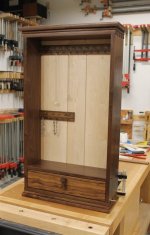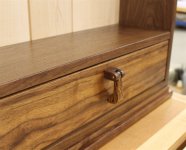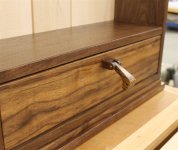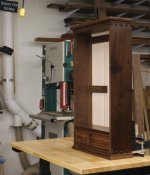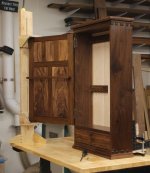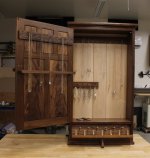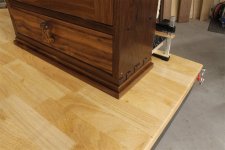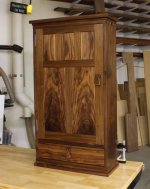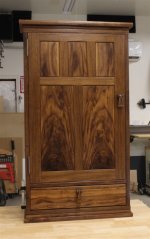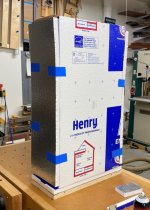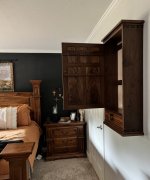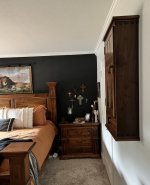This is straight out of what I learned from Rennie via text and shared pics. My interpretation may not be exactly what Rennie does but if its close I imagine its OK. I used a couple of "dog towels" (towels that have been washed so many times that they don't have any lint left to offer) to wrap the piece. I used 1" rigid foam to protect and isolate the piece.
View attachment 127014
I used spray adhesive to attach the foam to some 1/4" plywood panels and just blue-taped other pieces of foam in place. The 1" x 1" pine frame pieces are glued and air-stapled to the plywood parts. These assembled panels are then glued and screwed together except for one panel that is screwed only. This not-glued panel is labeled "open here".
The crate is sized so that the piece is held pretty tightly. Material for the crate was about $50. The piece weighs an even 30 pounds and the crate is 28 pounds. I don't scrimp on the glue or screws as we all know how careful some material handlers are between points A and Z.



